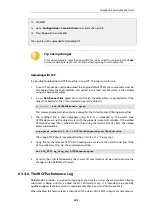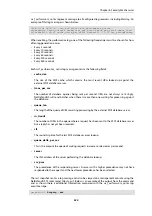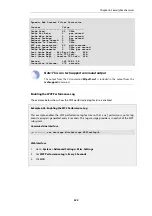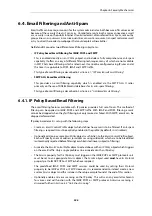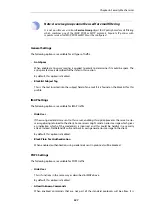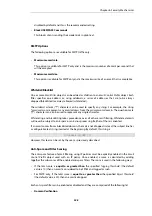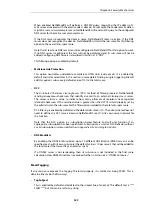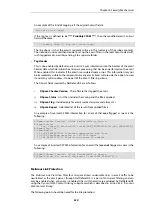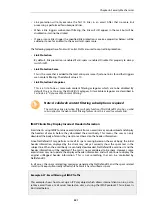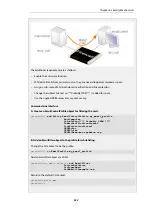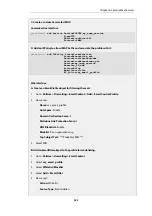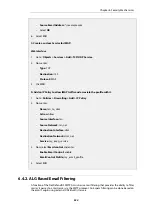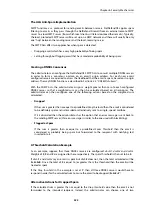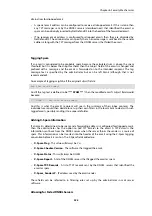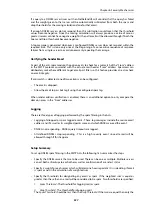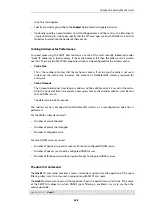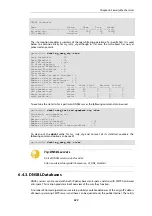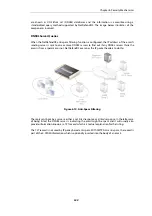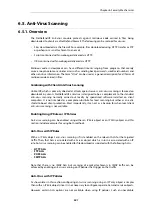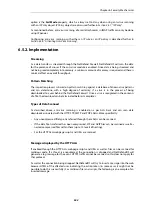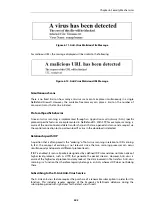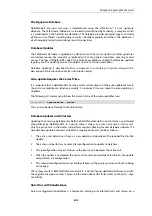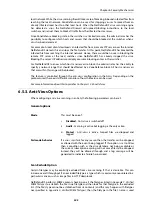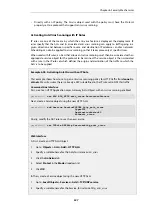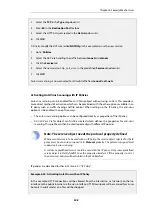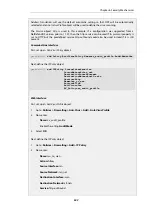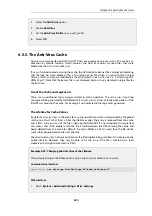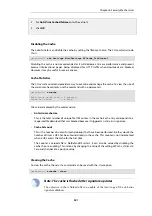
alternatives for dropped email:
•
A special email address can be configured to receive all dropped email. If this is done then
any
TXT
messages sent by the DNSBL servers (described next) that identified the email as
spam can be optionally inserted by NetDefendOS into the header of the forwarded email.
•
If no receiver email address is configured for dropped emails then they are discarded by
NetDefendOS. The administrator can specify that an error message is sent back to the sender
address along with the
TXT
messages from the DNSBL servers that failed the email.
Tagging Spam
If an email is considered to be probably spam because the calculated sum is above the spam
threshold but it is below the drop threshold, then the
Subject
field of the email is changed and
prefixed with a message and the email is forwarded on to the intended recipient. The tag
message text is specified by the administrator but can be left blank (although that is not
recommended).
An example of tagging might be if the original
Subject
field is:
Buy this stock today!
And if the tag text is defined to be "*** SPAM ***", then the modified email's
Subject
field would
become:
*** SPAM *** Buy this stock today!
And this is what the email's recipient will see in the summary of their inbox contents. The
individual user could then decide to set up their own filters in the local client to deal with such
tagged emails, possibly sending it to a separate folder.
Adding X-Spam Information
If an email is determined to be spam and a forwarding address is configured for dropped emails,
then the administrator has the option to
Add TXT Records
to the email. A
TXT Record
is the
information sent back from the DNSBL server when the server thinks the sender is a source of
spam. This information can be inserted into the header of the email using the
X-Spam
tagging
convention before it is sent on. The X-Spam fields added are:
•
X-Spam-Flag - This value will always be
Yes
.
•
X-Spam-Checker-Version - The software that tagged the email.
•
X-Spam-Status - This will always be
DNSBL
.
•
X-Spam-Report - A list of the DNSBL servers that flagged the email as spam.
•
X-Spam-TXT-Records - A list of TXT records sent by the DNSBL servers that identified the
email as spam.
•
X-Spam_Sender-IP - IP address used by the email sender.
These fields can be referred to in filtering rules set up by the administrator in mail server
software.
Allowing for Failed DNSBL Servers
Chapter 6: Security Mechanisms
536
Summary of Contents for NetDefendOS
Page 30: ...Figure 1 3 Packet Flow Schematic Part III Chapter 1 NetDefendOS Overview 30 ...
Page 32: ...Chapter 1 NetDefendOS Overview 32 ...
Page 144: ...Chapter 2 Management and Maintenance 144 ...
Page 284: ...Chapter 3 Fundamentals 284 ...
Page 392: ...Chapter 4 Routing 392 ...
Page 419: ... Host 2001 DB8 1 MAC 00 90 12 13 14 15 5 Click OK Chapter 5 DHCP Services 419 ...
Page 420: ...Chapter 5 DHCP Services 420 ...
Page 573: ...Chapter 6 Security Mechanisms 573 ...
Page 607: ...Chapter 7 Address Translation 607 ...
Page 666: ...Chapter 8 User Authentication 666 ...
Page 775: ...Chapter 9 VPN 775 ...
Page 819: ...Chapter 10 Traffic Management 819 ...
Page 842: ...Chapter 11 High Availability 842 ...
Page 866: ...Default Enabled Chapter 13 Advanced Settings 866 ...
Page 879: ...Chapter 13 Advanced Settings 879 ...


